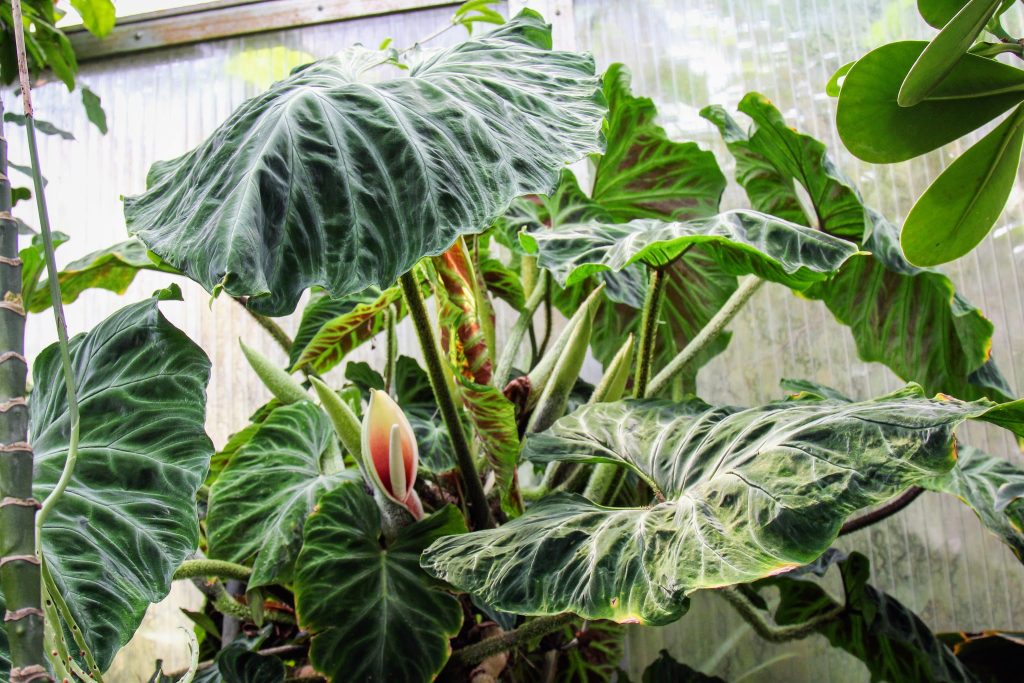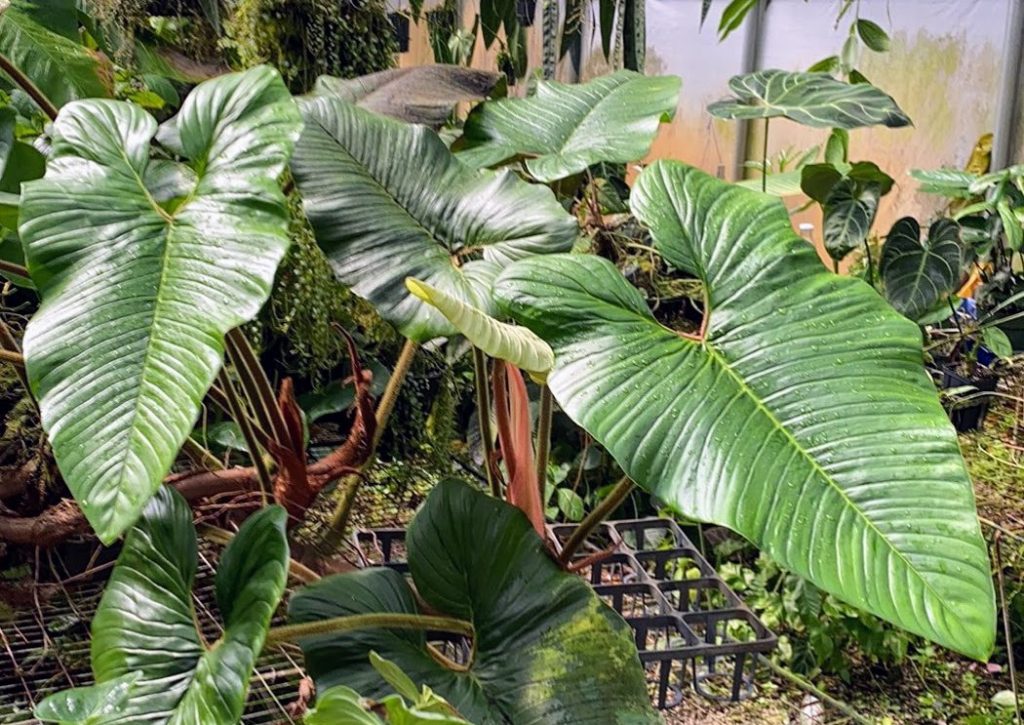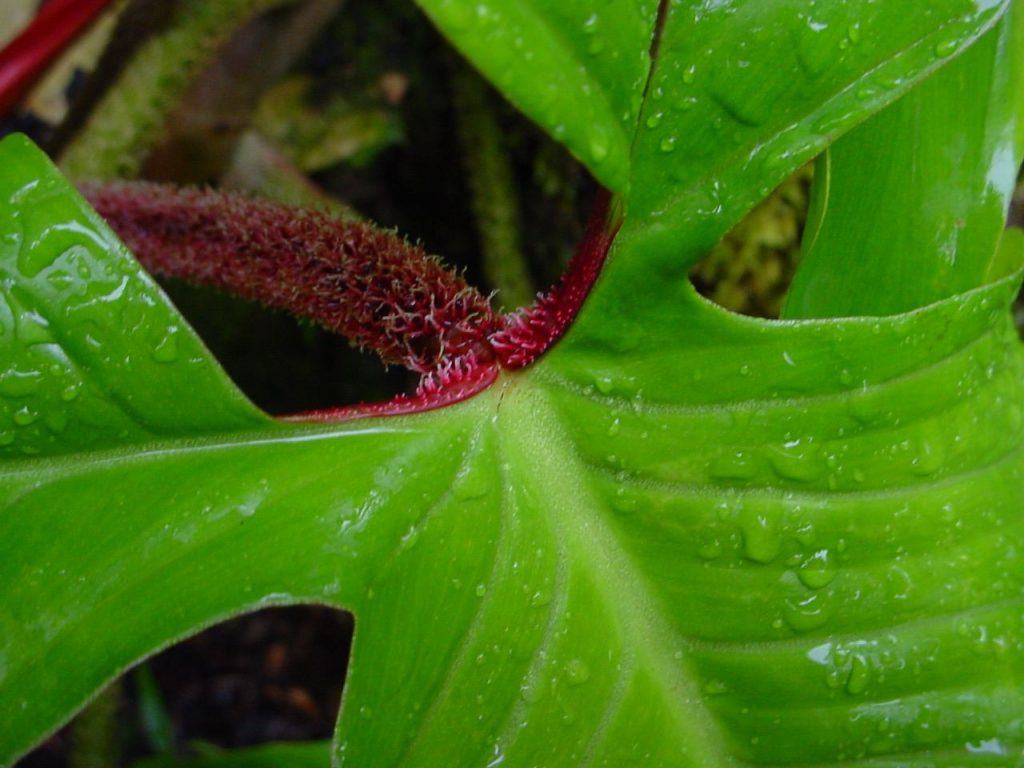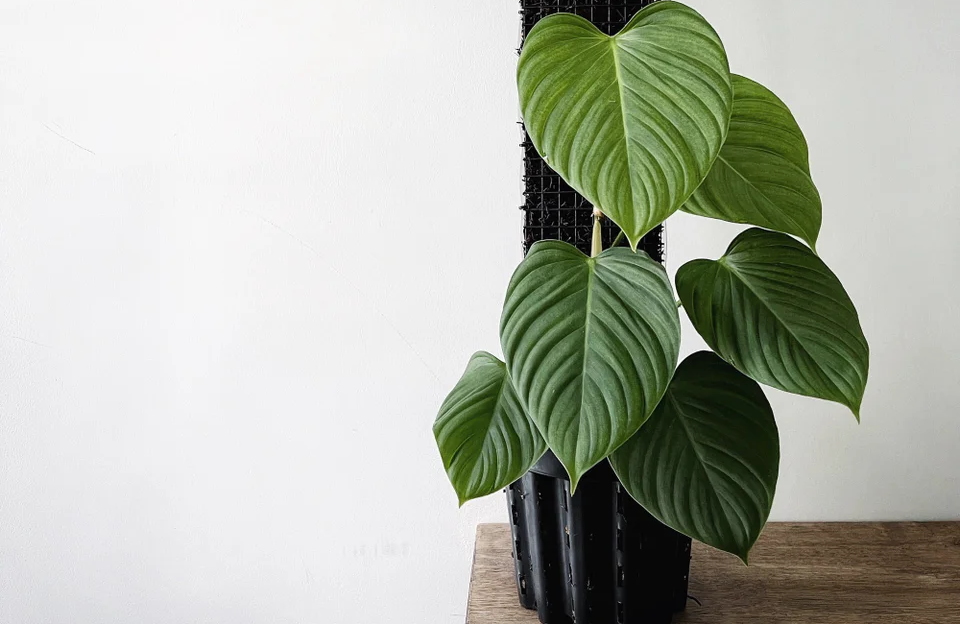There are hundreds of different philodendron species in the world, and many thousands more that have been produced through selective breeding or hybridisation. Of these, only a small number feature furry stems and petioles. In this post, we look at 5 such species, all of which are available to purchase in Australia.
The reason for these furry stems is not conclusively known, but it is thought that they evolved to allow the plants to protect themselves from getting eaten herbivores. The hairs might also help the plant to conserve moisture by trapping a layer of air around the stem and reducing evaporation.
Philodendron Verrucosum

Philodendron verrucosum is climbing philodendron from equatorial regions in South America. Numerous stunning forms of this plant have been cultivated, however in Australia we only have access to the regular “wild type” plant.
This plant was fairly rare and expensive in Australia only a few years ago. I purchased mine for $90 from a lady who had paid almost a thousand dollars for the plant a few years prior. Today, the plant can be found in most Bunnings stores or on eBay for $25-$50.
Philodendron verrucosum can be a bit of a nightmare to grow successfully. They don’t like to get too cold, but (as a high-altitude species) also don’t tolerate hot temperatures. Somewhere around 20 degrees celsius seems to be their sweet spot. They’re also frustratingly prone to spidermites; especially if your humidity level isn’t consistently extremely high.
Philodendron Squamicaule
Philodendron squamicaule is still quite a rare and expensive in Australia, commanding prices of up to $500 on the infrequent occasion that one is available to purchase. Once you’ve found one, the challenges aren’t over yet, as these plants ship very poorly and often lose leaves and develop rot in transit.

There also exists a striking red form of this plant, which has intense burgundy colour on the underside of the leaf and dark green (almost black) colouring on the top of the leaf.
This plant is sometimes confused with its similar-looking relative, the philodendron serpens. As far as I’m aware, the serpens is not available in Australia.
Philodendron Nangaritense
Philodendron nangaritense was quite rare until very recently, though they’ve now started popping up in Bunnings stores in Queensland. I purchased this plant back when they were expensive with the intention of propagating and selling; thinking it would be niche enough to hold its value for a while.

Not only has the investment plan gone out the window, I’ve also grown to rather dislike the plant. I mean… it’s fine. But the stems aren’t particularly hairy nor colourful, it grows more or less like a typical climber, and the leaves harden down to a fairly generic green colour. Its only redeeming features are the temporary salmon-colouring of the new leaves as they unfurl.
Philodendron Squamiferum
Easily the most common and affordable plant on this list, the philodendron squamiferum can be readily found in garden centres and hardware stores. Despite their low monetary value, these guys arguably have the most impressive furry stems out of all plants listed in this post.

Squamiferums are quite big and chonky (that’s a word, right?) compared to most other climbing philodendrons. We have one in the bathroom that’s about two years old and it’s already two metres tall, a metre wide, and absolutely covered in inflorescences (a fancy word for flower). Needless to say, these are extremely easy, hardy and fast-growing plants.
Philodendron Fuzzy Petiole
Philodendron Fuzzy Petiole is another climbing/rambling philodendron with heart-shaped leaves and a slightly furry stem. I say “another” because this plant is almost completely indistinguishable from the Philodendron nangaritense to all but the most obsessive aroid experts.

Debate rages as to whether this plant even exists in Australia. Some people believe all the “fuzzy petioles” are actually Philodendron nangaritense. Others believe there’s no philodendron nangaritense in Australia; and everything labelled as such is actually philodendron fuzzy petiole. Then, of course, there’s the entirely reasonable position that we have both species and they’re just constantly getting confused for one another.
